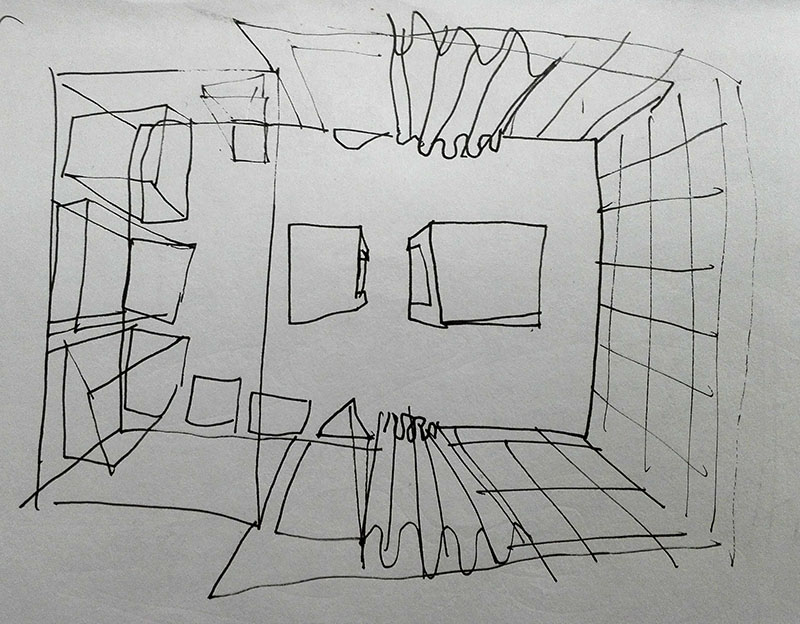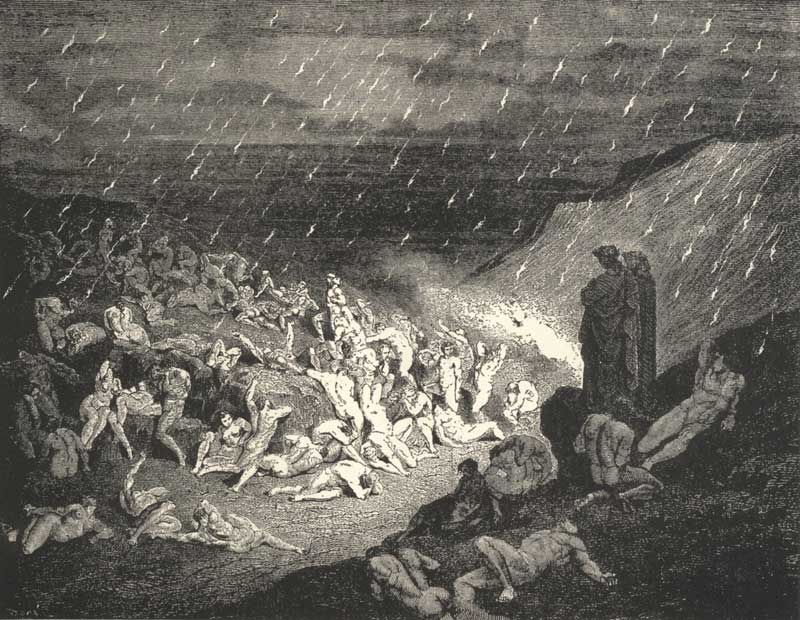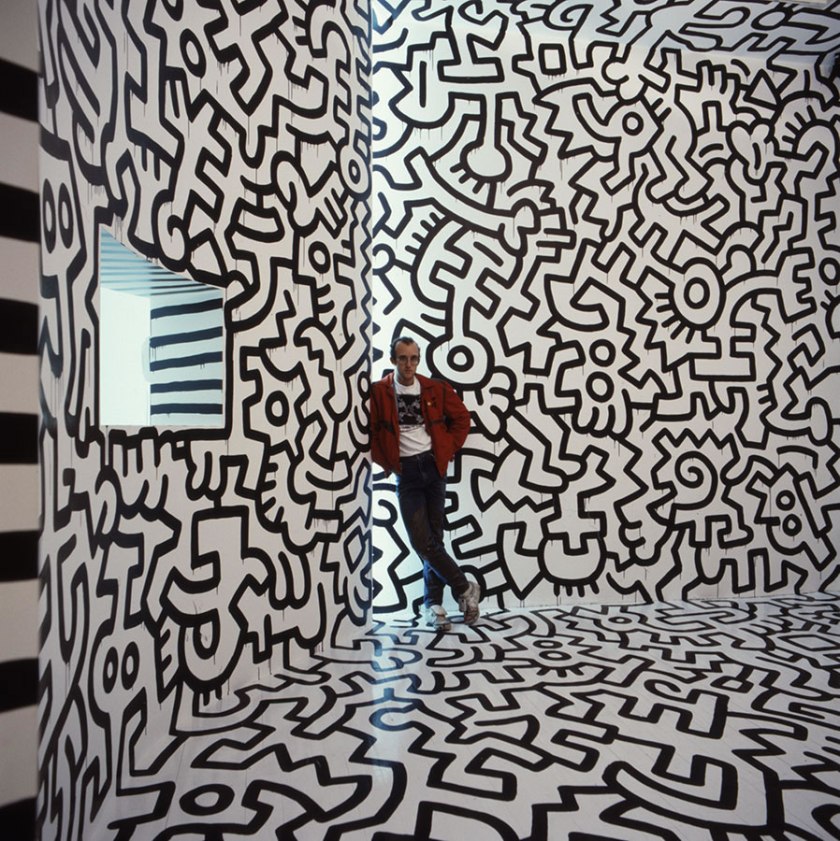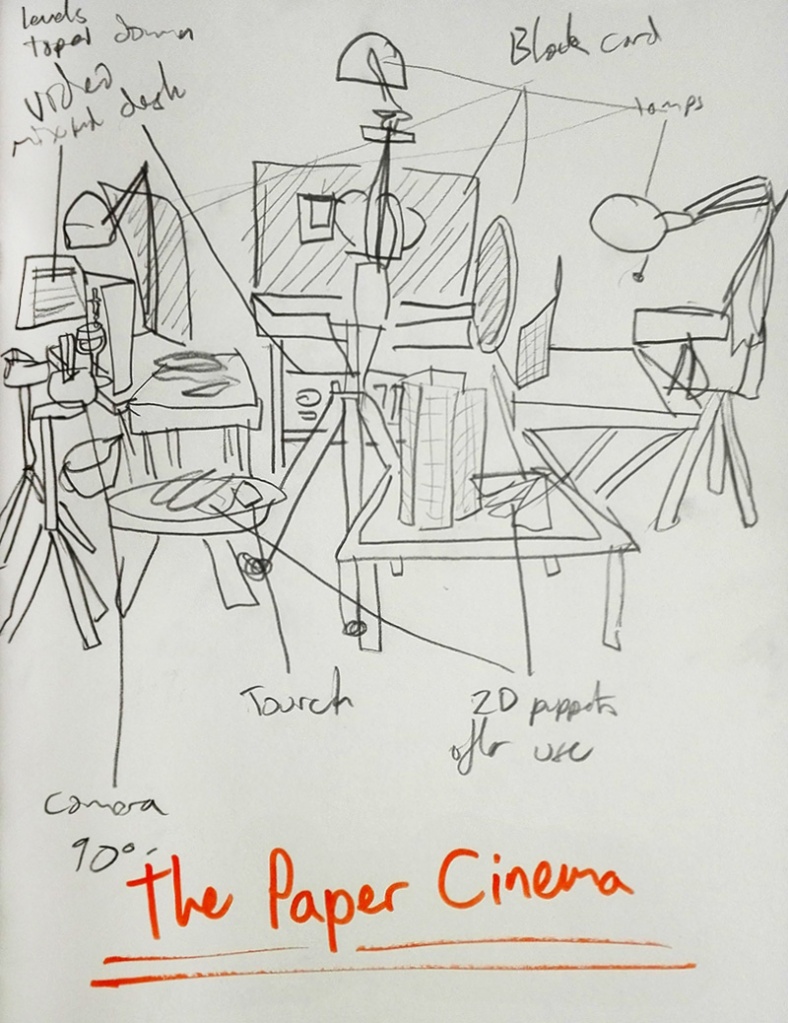8 minute edited film:
20 minute unedited single shot version:
The focus of my semester’s output, from the elective ‘What’s Up Doc?’, was a 20 minute film called ‘Performance‘. This film focuses on moments of sexual dysfunction and what those fractures reveal about our performed gender roles.
Performance consists of three separate interviews conducted over a period of 2 months in late 2016. Lakis is a cis male therapist with the Philadelphia Association, a Psychotherapy organisation. Tessa is a cis female documentary film maker who identifies as a lesbian, and Dot is a transgender woman and former radio presenter, who sometimes occupies both a masculine and feminine gender roles. I am a heterosexual cis male.

Production:
From the 7th – 12th December I booked the large stop-motion studio at the RCA. I filled the space with a channel of drawings which were mimetic, symbolic and at times abstract. These images create a time line which matches a 20 minute audio edit. Using a Sony A7 camera with a 50mm lens, I filmed the illustrations in a single tracking shot, in-time with the audio. By the end of the week had time to create 4 takes.
I was drawn to the word ‘Performance‘ because of how many of it’s meanings proved relevant to the content and construction of the film. The content was very much about sexual performance and how our gender roles are to an extent constructed and displayed. I also liked the performative aspect of creating an ambitious instillation and 20 minute film in a week. Finally the manor in which the footage I captured, a single shot brimming with imperfections as well as moments of artful execution, was in it’s self the most tangible aspect of performance.
Unfortunately the most consistent negative feedback from my class and tutors was that Performance was too long. In addition to this the timing of a live camera performance could never match a carefully edited sequence. I cut the film down to 8.38 minutes, while this erodes at least one of the conceptual layers of the film, the final outcome is stronger.
Contextual Research:
I’ve recently realised that, in addition to the workshop with Bunny Schendler, the method I’ve developed for this film strongly references Paul Bush‘s scratch films. I’ve been following Bush’s career since 2006 when we first met. It was my great privilege to be taught by him on the AniDox:Lab in Copenhagen in 2015. To my surprise, when he presented at the London Animation Club in October 2016, he screened what he described as his “break out film”, a short that I’d never heard of.
His Comedy, (1994), 8 mins, 35mm, colour, Dolby Stereo.
Bush used a celluloid film camera to pan across the detailed illustrations in Gustav Dore’s etchings of Dante’s The Devin Comedy. This footage was then scratched into directly by Bush cell by cell, producing a jostling line-boil which brings these inanimate illustrations to life.
‘The poet Dante is taken by Virgil through the gates of the city of desolation and into the centre of hell. What he sees is not simply an apocalyptic vision of the punishment that awaits sinners after death but also the very real horrors committed by human hands on earth.’ (PaulBushFilms.com)

Paul Bush’s film demonstrates that we share a fascination with intricate narrative compositions, common in Flemish renaissance painting.

I have noticed dense compositions have become more popular in contemporary illustration. I believe this traces back to Keith Harring’s influence via the mainstream fine art world and the legacy of the New York Street Art scene. I am particularly interested in interlocking imagery with inconsistent perspective fields. Harring’s work focuses heavily on silhouetted design and bold mark making. While I have a tendency to shift into three dimensional space I hope to adopt a similar sense of cohesion in my drawings.

The Paper Cinema have been a huge influence on my decision to animate static drawings using camera moment. While they use a complex set up of static cameras capturing moving 2D drawigs, their adaption of the Odyssey inspired me to break out of the 3 minute animation format. By being less precious about my method I was able to produce 20 minutes of footage in an afternoon after one week of drawing and 2 months of development.

Nic Rawling, artistic director of The Paper Cinema, came to visit the RCA and offered creative consultation on my film. We replicated Bunny Schendler and Sylvie Bringas’ drawing workshop (described in more detail here), knocking out spontaneous illustrations in time with the pre-edited interview soundtrack. Nic created a fantastic illustration of a lit match and a it’s shrivelled, post-combustion state. This seemed like a poignant metaphor for male potency, how one moment a man can feel virile and powerful and the next, pending the loss of an erection, they could feel useless.

Colour Palette:
In the past year I have developed an inverted colour technique using Pentel Sign pens. I initially started this work as part of a proposal for the 2016 AniDox Residency. The idea was based on Irene Liverani‘s PhD research into the Genova G8 political violence in 2001.

I then produced a music video for Autoheart using the same method in animation, this time working without photographic reference.
For Performance I attempted to colour code each character to help differentiate their presence in the shifting interviews. In order to plan this I had to use an inverted spectrum key.

I am particularly drawn to this method because it can breathe life into quite flat drawings. The vibrancy of this sudo-neon pallet is highly appealing to me.

Conclusions and future outcomes:
From the feedback I’ve heard so far, a common criticism is that this work would make a strong podcast but a weak film. It is difficult to engage an audience for 20 minutes with a single screen. The first solution is to scrap the visuals, polish the audio and submit the edit to a podcast production company such as WBEZ, the producers of This American Life, or Falling Tree productions, an award winning British radio production company.
I will create a gallery instilation in Febuary 2017. The ‘Performance‘ drawings will be hung and light with black lamp in the Courtyard 1 Gallery at the Royal College of Art. I hope to have a one off projected screening during the private view, but for the rest of the week I will set up separate screens around the gallery. These will be synced to the 20 minute audio loop, each screen showing one of the 4 takes I recorded with the Sony A7 camera. While the individual screens won’t match exactly, the timing of each will correlate to the soundtrack. Performance lends itself to a more transient audience who can pass through the space, drifting in and out of the prescriptive screen narratives and the jumbled wall mounted drawings.
There is potential to make a concise edit of the current footage I’ve captured. From the four takes I should have decent shots of each section, some of which will be lost for good. The Matador and trampoline scenes stood out as featuring noticeably successful metaphorical content. I hope to slice up the sequences and pull together the best components with the hope that I’m not loosing anything by choosing to edit what was meant to be a single shot performance.
Finally, I must decide weather or not any of the content gathered in this project so far deserves to be pulled forward into my next animated short. The 2016-18 Documentary Animation MA class will be working with the Wellcome Collection Library to create a film that takes influence from the institution’s collection to encourage audiences to ‘think about health by connecting science, medicine, life and art’. In many ways sexual dysfunction is an ideal subject for this brief, however if I keep the project so focused on my personal experiences I might make a film that doesn’t fully take advantage of what the Wellcome Library has to offer.


Really interesting work Alex! I’m enjoying reading about your process.
LikeLike